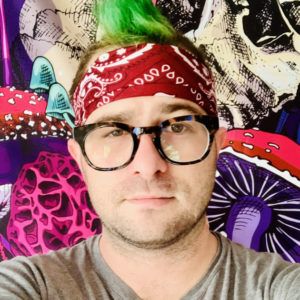
Suffer, Treat, Repeat: The Problem of Treatment Resistant OCD
Obsessive-compulsive disorder (OCD) affects roughly 2% of the world population, and is characterized by obsessions or intrusive thoughts that drive repetitive behavioral rituals which temporarily relieve the state of anxiety brought on by the obsessions.1,2 For instance, a person with obsessions about harm and safety will repetitively and excessively check whether they have turned off the oven or locked their doors and windows.1,2 Although antidepressants (e.g., SSRIs, SNRIs, and TCAs) are the first line of treatment for OCD, these drugs do not improve symptoms for at least 50% of patients and can take weeks to months to have an effect.1-3 Furthermore, even the subpopulation of people with OCD that do respond to antidepressants require even larger doses of these drugs, which often elicit a range of adverse side-effects that reduce drug regimen tolerability and quality of life.2,3
Treatment-resistant OCD can be so disruptive that patients will sometimes undergo extreme, irreversible neurosurgical procedures like cingulotomy, which involves use of a “gamma knife” to destroy brain tissue in a region called the anterior cingulate cortex.4,5 Although this lesion-based method often reduces repetitive behavior in people with difficult-to-treat OCD, undesired and permanent side-effects of the surgery include difficulty paying attention, blunted mood, loss of motivation, and impairments in memory.4-6 Thus, more tolerable and effective drugs are needed to provide relief of OCD symptoms in the large population of patients that do not respond to conventional antidepressant treatment.1-3 In general, neurosurgical interventions should be reserved only for the most extreme cases after all other pharmacological avenues have been exhausted.6,7 Though preliminary, exciting new research on the anti-compulsive efficacy of psilocybin in people with OCD suggests that psychedelic-assisted psychotherapy may represent a promising novel treatment modality for this disorder.8-11
Digging Into the Literature: Preclinical Models of OCD for Anti-Compulsive Drug Screening
Anti-compulsive drug effects are tested in rodent models of OCD, including repetitive digging behavior in mice as assessed in the marble burying (MB) test.12,13 Anti-compulsive drugs reduce digging in the MB test without causing sedation, loss of coordination, or other abnormal behaviors.12,13 Findings from clinical studies in people with OCD as well as preclinical experiments using the MB test indicate that serotonin (5-HT) receptors play a critical role in the therapeutic, anti-compulsive effects of SSRIs.3, 13-15 Activation of 5-HT receptors is also thought to be involved in the anti-compulsive effects of psilocybin.8,16,17 Interestingly, although psilocybin activates both 5-HT2A and 5-HT2C receptors,18 its anti-compulsive effects in the MB test are not reduced by pharmacological blockade of either receptor.16
Psilocybin and its active metabolite psilocin are considered pharmacologically “dirty” in the sense that they bind to a range of other molecular targets, including other types of 5-HT receptors, the 5-HT transporter (SERT), and receptors for other neurotransmitters like norepinephrine (NE).18,19 The anti-compulsive effects of psilocybin may also require simultaneous activation of a combination of these molecular targets which could engage multiple, diverse biological signaling cascades that all act in concert.16-19
Follow the 1A: Investigating the Role of 5-HT1A Receptors in Psilocybin’s Anti-Compulsive Effects
The 5-HT1A receptor primarily serves as an “autoreceptor” on neurons that synthesize and release 5-HT.20 This inhibitory autoreceptor sensitively detects synaptic levels of 5-HT released from serotonergic neurons and then reduces subsequent 5-HT release through negative feedback signaling, like a thermostat turning off central air conditioning when the desired temperature is reached.20 Psilocybin has a high affinity for 5-HT1A receptors,18-19 but the anti-compulsive effects of activating the 5-HT1A autoreceptor in the MB test have only been demonstrated in a handful of previous studies.21,22
In the present study, published on the preprint server BioRxiv, Singh and colleagues set out to investigate the role of the 5-HT1A receptor activation in psilocybin’s anti-compulsive effects in a mouse model of OCD.23 The authors also sought to assess if the anti-compulsive effects of other 5-HT1A agonists would synergize with those of psilocybin. They assessed the effects of psilocybin on digging behavior in the MB test using antagonists of 5-HT2A (M100907) and 5-HT1A (WAY100635) receptors, as well as 5-HT1A partial agonist buspirone and 5-HT1A full agonist 8-OH-DPAT.23 These elegant behavioral pharmacology experiments were used to determine if psilocybin’s anti-compulsive effects in this model were dependent on activation of the 5-HT1A autoreceptor. The effects of buspirone co-administration with psilocybin in the head-twitch response (HTR) screen for “hallucinogenic” drug effects in mice was also assessed in this study.18,23
Summary of Major Findings:
- Psilocybin, like the reference SSRI-type antidepressant escitalopram, demonstrated anti-compulsive activity in the MB test, reducing the total number of marbles buried.
- Psilocybin’s anti-compulsive effect in the MB test was not blocked by pre-treatment with antagonists for either the 5-HT2A receptor (M100907) or the 5-HT1A receptor (WAY100635).
- Both the 5-HT1A receptor partial agonist buspirone and full agonist 8-OH-DPAT were anti-compulsive on their own in the MB test.
- Psilocybin’s anti-compulsive effect in the MB test was enhanced by co-administration of the 5-HT1A full agonist, but not the partial agonist.
- Buspirone significantly reduced the number of psilocybin-induced HTRs.
Burying the Lead: In Search of the Right Drug Target(s) for Treating OCD
Findings from this interesting study bolster support for the efficacy of psilocybin as a pharmacotherapy for OCD through mechanisms independent of the 5-HT2A receptor, which is thought to confer the hallucinogenic effects of psilocybin and elicit HTR behavior in mice.8-11,16-18 In addition, the authors replicate previous findings that 5-HT1A agonists are also anti-compulsive in the MB test, suggesting therapeutic efficacy for drugs that activate this receptor.20-22 Interestingly, the 5-HT1A full agonist in combination with psilocybin produced an dramatically additive anti-compulsive effect, suggesting that 5-HT1A receptor responses are not saturated by psilocybin and that their full activation by 8-OH-DPAT can further reduce compulsivity.23,24
Although these results have important implications for understanding the molecular targets of psilocybin and the neurobiology of OCD, interpretation of the pre-print manuscript is somewhat limited by several factors.23 First, the authors did not test the effects of simultaneous blockade of both 5-HT2A and 5-HT1A receptors prior to administration of psilocybin in the MB test,23 as Odland and colleagues did not test the effects of simultaneous 5-HT2A and 5-HT2C blockade with psilocybin in the same paradigm.16 Thus, it is impossible to determine from these findings whether or not blockade of both 5-HT1A and 5-HT2A receptors at once would have blocked the anti-compulsive effects of psilocybin.23
Moreover, although the authors present the unexpected finding that the atypical antidepressant and partial 5-HT1A agonist buspirone can reduce psilocybin-induced HTRs without altering its anti-compulsive effects, they did not assess if pre-treatment with an SSRI such as escitalopram would alter psilocybin-mediated behaviors.23 Since SERT may be another possible pharmacological target of psilocybin, SERT inhibition with an SSRI could have brought clarity to these questions. The ability of buspirone to reduce psilocybin-induced HTRs suggests that it may antagonize 5-HT2A receptors either directly or indirectly.18,20 Experiments outlined in this preprint from Singh and colleagues have helped advance the field, but there are still many unanswered questions regarding the relevant molecular targets of psilocybin for reducing compulsivity in people and mice.23
Advancing the Noradragenda: Role of the Noradrenergic System in Behavioral Effects of Psilocybin?
As mentioned above, the active metabolite of psilocybin (psilocin) has a high affinity for receptor types outside of the serotonergic system, including the noradrenergic system and its attendant receptors for the neurotransmitter NE.19 Recent studies from Lustberg and colleagues have demonstrated that either pharmacological or genetic reduction of NE signaling potently suppressed compulsive behavior in the MB test.25 Further, psilocin has been shown to activate ɑ2 autoreceptors, which function much like 5-HT1A autoreceptors except they are expressed by noradrenergic neurons and reduce the release of NE through negative feedback.19,26 There are relatively few studies on the effects of psychedelics with respect to the noradrenergic system, but these may be warranted in the future to determine whether psilocybin’s anti-compulsive properties can be explained by reduction of NE signaling, 5-HT signaling, or modulation of both transmitter systems simultaneously.27-30
